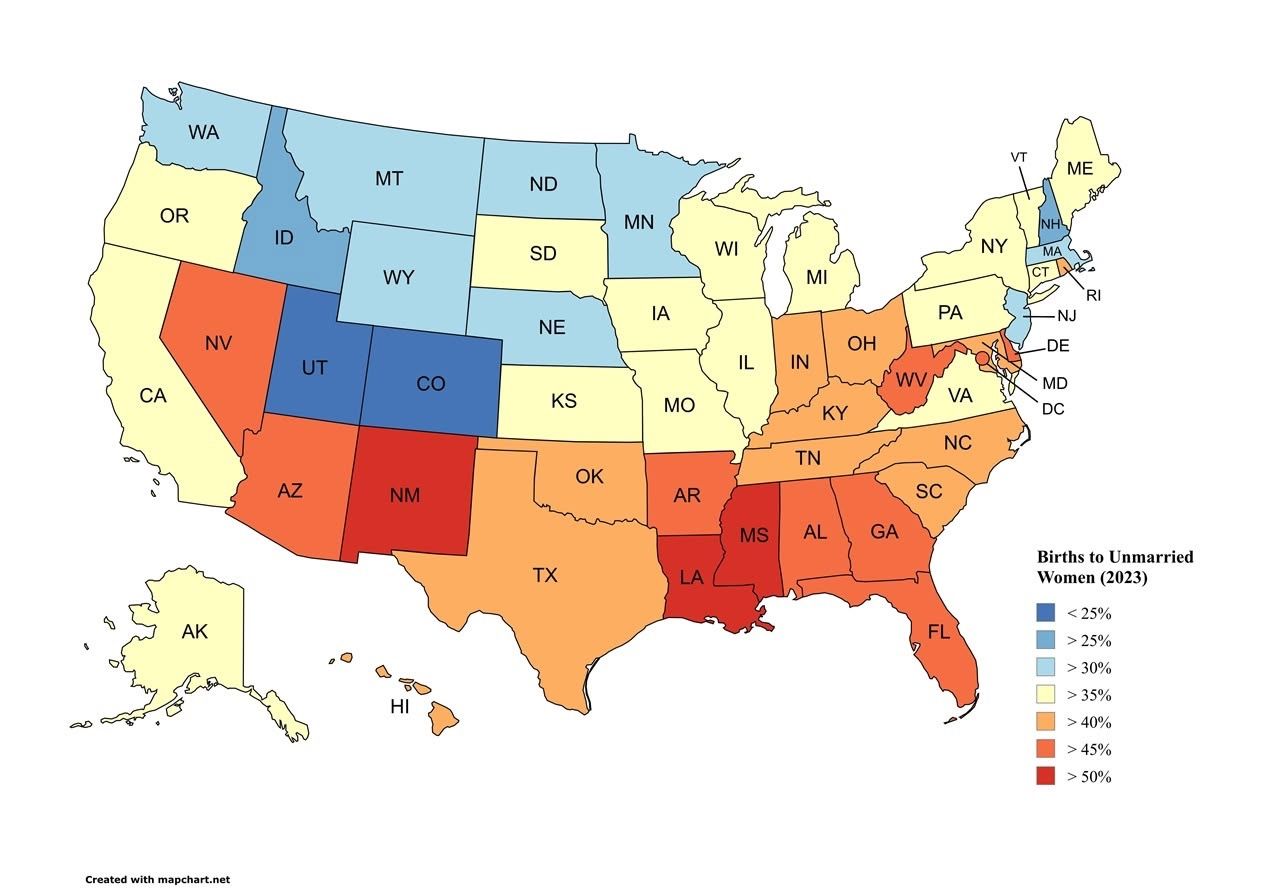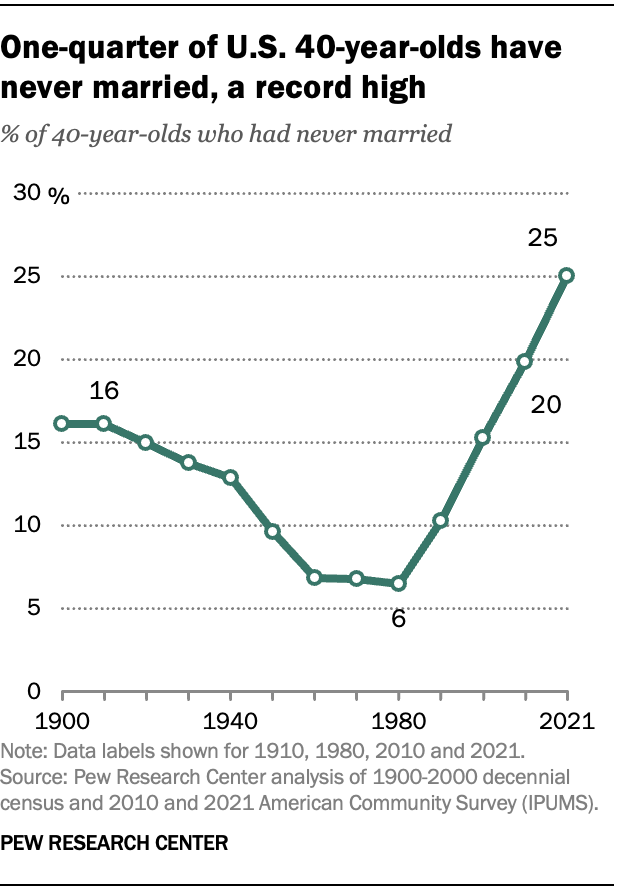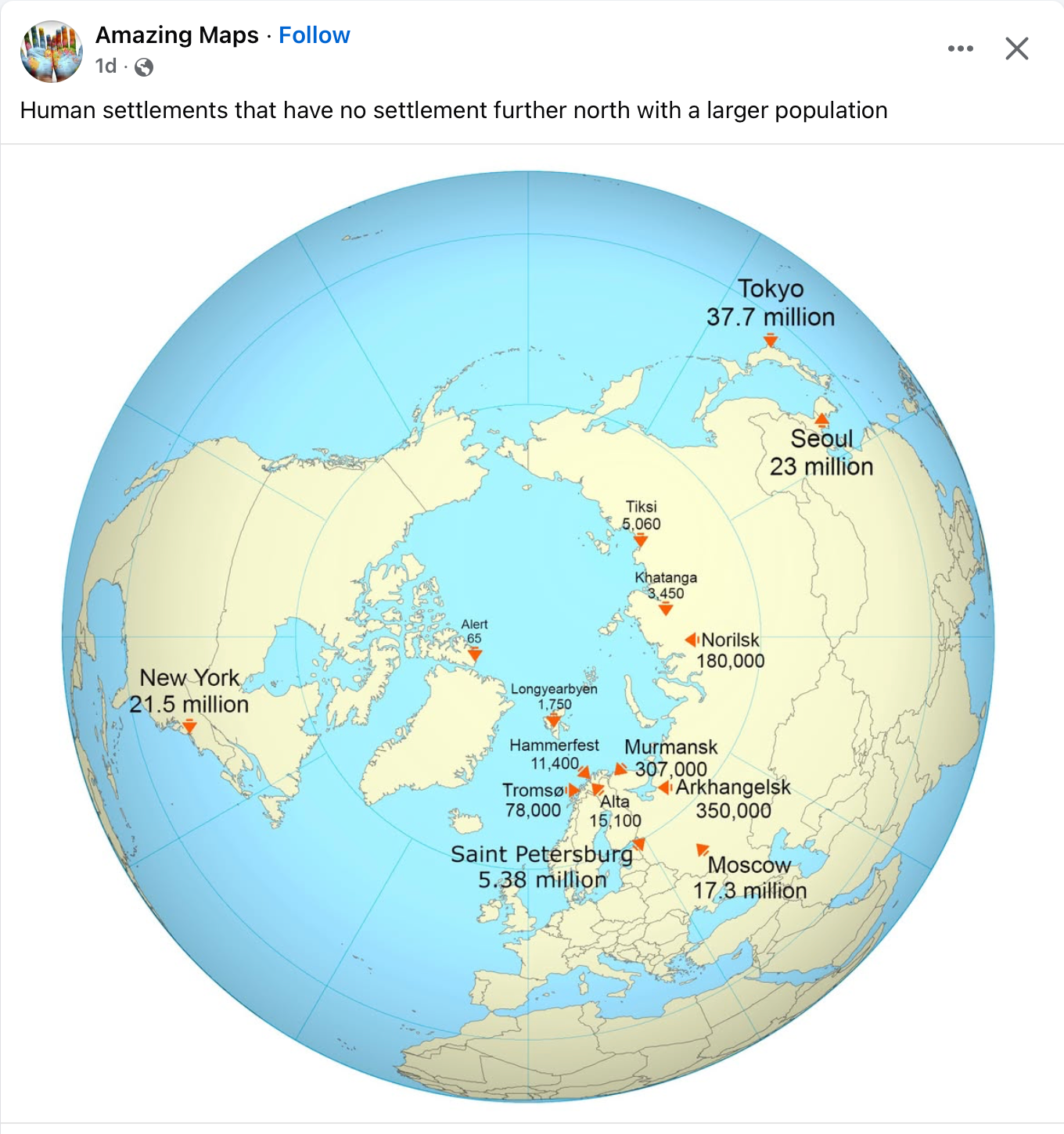Mildly interesting
-
@jon-nyc said in Mildly interesting:
This is sad.

It is.
Now overlay that map with one with abortion rates. My bet is that one is even sadder.
-
@jon-nyc said in Mildly interesting:
Also sad.

Wow, the numbers in the early 1900s were surprisingly high…
-
@jon-nyc said in Mildly interesting:
That surprised me too. More spinsters as med died more frequently at a younger age?
I had a surprising number of maiden great aunts who were born in the 1890's, but I think that was probably due to WW1. The impact of that war would have been less noticeable in the US as a considerably smaller proportion of the male population died.
Did the US Civil War affect the 1900 figures?
-
@jon-nyc said in Mildly interesting:
That surprised me too. More spinsters as med died more frequently at a younger age?
I had a surprising number of maiden great aunts who were born in the 1890's, but I think that was probably due to WW1. The impact of that war would have been less noticeable in the US as a considerably smaller proportion of the male population died.
Did the US Civil War affect the 1900 figures?
@Doctor-Phibes said in Mildly interesting:
@jon-nyc said in Mildly interesting:
That surprised me too. More spinsters as med died more frequently at a younger age?
I had a surprising number of maiden great aunts who were born in the 1890's, but I think that was probably due to WW1. The impact of that war would have been less noticeable in the US as a considerably smaller proportion of the male population died.
Did the US Civil War affect the 1900 figures?
@Doctor-Phibes said in Mildly interesting:
@jon-nyc said in Mildly interesting:
That surprised me too. More spinsters as med died more frequently at a younger age?
I had a surprising number of maiden great aunts who were born in the 1890's, but I think that was probably due to WW1. The impact of that war would have been less noticeable in the US as a considerably smaller proportion of the male population died.
Did the US Civil War affect the 1900 figures?
That’s what I was wondering about…But then, there’s an old saw about there being no bigger boost in new marriages and babies than a war breaking out. Maybe that’s not as true as advertised.
-
@Axtremus said in Mildly interesting:
Reagan broke it.The birth control pill broke it. -
@Axtremus said in Mildly interesting:
Reagan broke it.The birth control pill broke it.@LuFins-Dad said in Mildly interesting:
@Axtremus said in Mildly interesting:
Reagan broke it.The birth control pill broke it.Eisenstadt v. Baird was decided in 1972.
-
And you expect the cultural ramifications to be immediate? The majority of the women of 32 years of age were already married in 1972… This would have had far greater impact on women younger than 30, with the results becoming noticeable ~ 1980. It also coincides with higher divorce rates, and more women entering the workplace, which completely shifted the economy for good and ill.
-
@jon-nyc said in Mildly interesting:
That surprised me too. More spinsters as med died more frequently at a younger age?
I had a surprising number of maiden great aunts who were born in the 1890's, but I think that was probably due to WW1. The impact of that war would have been less noticeable in the US as a considerably smaller proportion of the male population died.
Did the US Civil War affect the 1900 figures?
@Doctor-Phibes said in Mildly interesting:
@jon-nyc said in Mildly interesting:
That surprised me too. More spinsters as med died more frequently at a younger age?
I had a surprising number of maiden great aunts who were born in the 1890's, but I think that was probably due to WW1. The impact of that war would have been less noticeable in the US as a considerably smaller proportion of the male population died.
Did the US Civil War affect the 1900 figures?
Me too. My great aunts raised my grandpa in MA. They were from Quebec and relocated to the U.S.. The way I heard it, it was due to the Spanish Flu .. grandpa’s parents died; he was left an orphan, but too young yet to work in factories there.
Here, in Alberta, I know ladies, being the last (youngest) sisters, who never marry. They stay in their family homes to care for their parents. Not uncommon. -
I asked @Horace’s buddy.
Great question. The relatively high percentage of 40-year-olds who had never married in the early 1900s—around 15–16%—can seem surprising, especially given the perception of earlier generations as marrying young and universally. Here are some key historical and social factors that likely contributed to that pattern:
⸻
 1. High Male Mortality (e.g., war, workplace)
1. High Male Mortality (e.g., war, workplace)
• In the late 19th and early 20th centuries, workplace accidents, infectious diseases, and limited medical care disproportionately affected men.
• Some men also delayed or avoided marriage due to economic instability or itinerant work (railroads, mining, etc.).⸻
 2. Economic Constraints
2. Economic Constraints
• The early 20th century included economic uncertainty and hardship for many, particularly in rural areas. For men, marriage was often viewed as a financial responsibility they shouldn’t take on unless they were established.
• For women, financial independence was limited, but familial obligations (like caring for aging parents) sometimes led them to remain single.⸻
 3. Social Norms and Immigration Effects
3. Social Norms and Immigration Effects
• Large waves of immigrants in the late 1800s and early 1900s (especially from Southern and Eastern Europe) sometimes married later due to economic necessity, cultural adjustment, or unbalanced gender ratios in certain immigrant communities.⸻
 4. Urbanization and Changing Lifestyles
4. Urbanization and Changing Lifestyles
• As cities grew, people began to leave traditional family structures. Some individuals delayed marriage while pursuing work or education, which was increasingly available—especially for men.⸻
 5. Data Considerations
5. Data Considerations
• Census enumeration methods and definitions of marriage status in the early 1900s may have been less consistent or inclusive (e.g., excluding common-law marriages or counting widowed/divorced differently), possibly inflating the “never married” category slightly compared to later surveys.⸻
 Why It Dropped Afterward
Why It Dropped Afterward
• From the 1930s through the 1960s, marriage rates soared. This era emphasized early marriage as a social norm, especially post-WWII during the “baby boom” years. That explains the dip in never-married rates among 40-year-olds (as low as 6% by 1980).⸻
So, while it may seem counterintuitive, the early 20th-century U.S. had many social and economic pressures that either delayed or discouraged marriage for a notable minority of the population.
-
-
-
@bachophile LOL. I thought for the first few seconds it was real.
-
-


 🪦
🪦